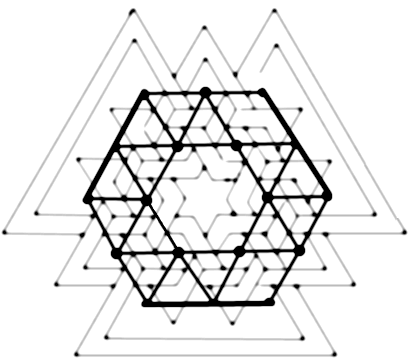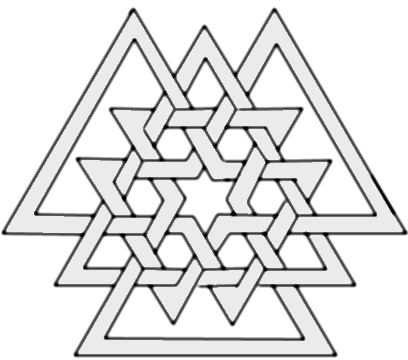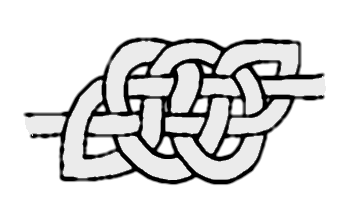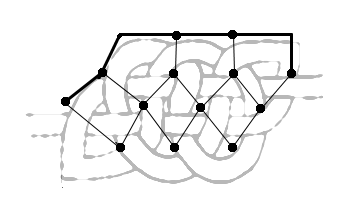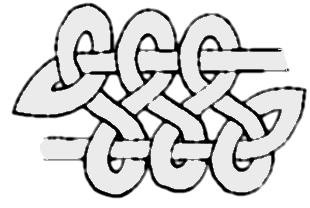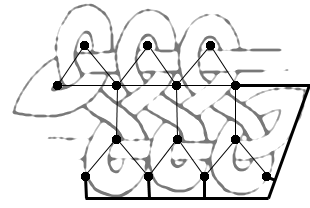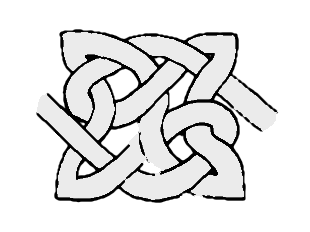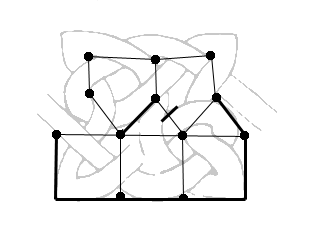If you’ve been infected you’ll now be scribbling on those empty corners of the page and you want to go further, to rediscover the fantastic lyric heroism of the Vikings, to interlace the beards of Freyr and Thor... But you don’t know how to design threads that stop or which end up in a mess.
Semi-encapsulation
How can you make not only interlacings without start or finish, but also what we call entanglements, where some threads attach themselves in a new mass or a fixed point? Already we must note that the ends always come in pairs, so it’s impossible to make an entanglement having only one extremity... If you have mastered the switch from a graph to its dual you are used to graphs bound by a wall, dual of a graph free as the air. Try then to make mixed graphs, of which the edge is made up of wall ends and free ends. You see that each wall end causes long threads to appear all alone, following the exterior wall along its whole length.
You then just cut the exterior threads and you find yourself with thread ends emerging from a central interlacing, a pair at the extremities of each wall. That’s semi-encapsulation. These are motifs that are much more subtle for manipulation and assembly and which allow, above all, to be mixed with people or animals of which the extremities (hair, beard, tail, arm, leg) intermingle..
This allows you to make pretty compositions especially if, like me, you draw the animals from the books of Aidan Meehan:
To do so, pick out the places where you want to make a thread emerge, at the start of a tail or an ear, place a vertex on one side of this thread and trace a wall which starts from there to go to the vertex that you place close to the end of the following thread, a second ear, another tail or the free end of it. Do it again for each pair of thread ends. You get a sequence of wall ends; let a graph grow which rests on this wall and stays in the space that you have fixed for it.
